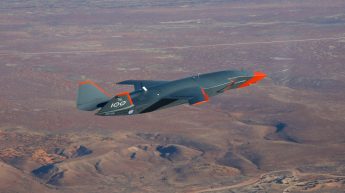
American air crash investigators are trying to determine if bolts used to secure the door plug that blew out on an Alaska Airlines 737 MAX 9 last week were properly installed.
More than 170 MAX 9s operated in US airspace or by US carriers are still grounded for safety inspections, with United and Alaska Airlines – the two major carriers that operate the aircraft – both reporting finding loose bolts.
No Australian carriers currently operate the MAX 9. Virgin Australia and Bonza both operate the shorter MAX 8 variant, with several MAX 10s on order for Virgin. None of the MAX 8s are affected by the incident, as the model lacks the emergency exit that is sealed by the door plug.
The US Federal Aviation Administration (FAA) has taken a hard line on grounding affected MAX 9s since the incident, which saw a door plug used to seal an unused emergency exit on N704AL, which was operating Alaska Airlines flight 1282 to Ontario, blow out at 16,000 feet, sucking two seats out of the fuselage. The plane was able to safely return to Portland.
“Every Boeing 737-9 Max with a plug door will remain grounded until the FAA finds each can safely return to operation,” the agency said in a statement.
“The safety of the flying public, not speed, will determine the timeline for returning the Boeing 737-9 Max to service.”
Four bolts, as well as 12 connecting points, are meant to secure the plug to the rest of the plane and prevent it from rolling upward and away from the aircraft as happened on flight 1282. According to NTSB aerospace engineer Clint Crookshanks, as quoted by Associated Press, the NTSB will not know if the bolts were properly fitted until a lab examination is conducted.
“We have not yet recovered the four bolts that restrain (the plug) from its vertical movement, and we have not yet determined if they existed there,” he said.
“That will be determined when we take the plug to our lab in Washington, D.C.”
In a statement, United has indicated that safety inspections on its other MAX 9 planes have uncovered problems, with Alaska also confirming “loose hardware” visible on their aircraft.
“Since we began preliminary inspections on Saturday, we have found instances that appear to relate to installation issues in the door plug. For example, bolts that needed additional tightening. These findings will be remedied by our tech ops team to safely return the aircraft to service,” United’s statement read.
Boeing supplier Spirit AeroSystems has again come under scrutiny following the blowout, as it is in charge of installing the door plugs in the MAX 9s. In a statement, it said its primary focus is the “quality and product integrity of the aircraft structures” it delivers.
“Spirit is a committed partner with Boeing on the 737 program, and we continue to work together with them on this matter,” the statement read.
“Spirit is following the protocols set by the regulatory authorities that guide communication in these types of circumstances and we will share further information when appropriate.”















